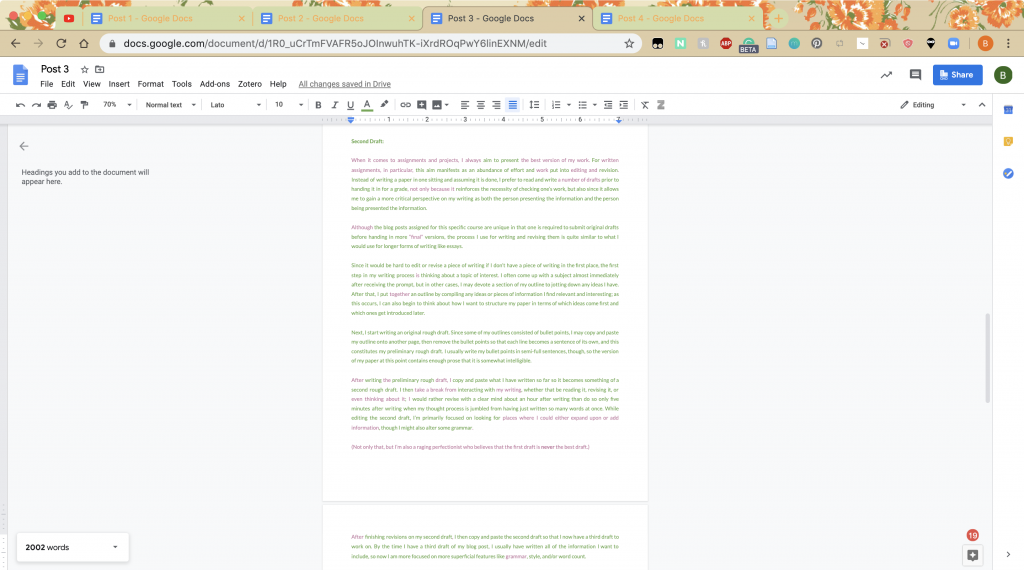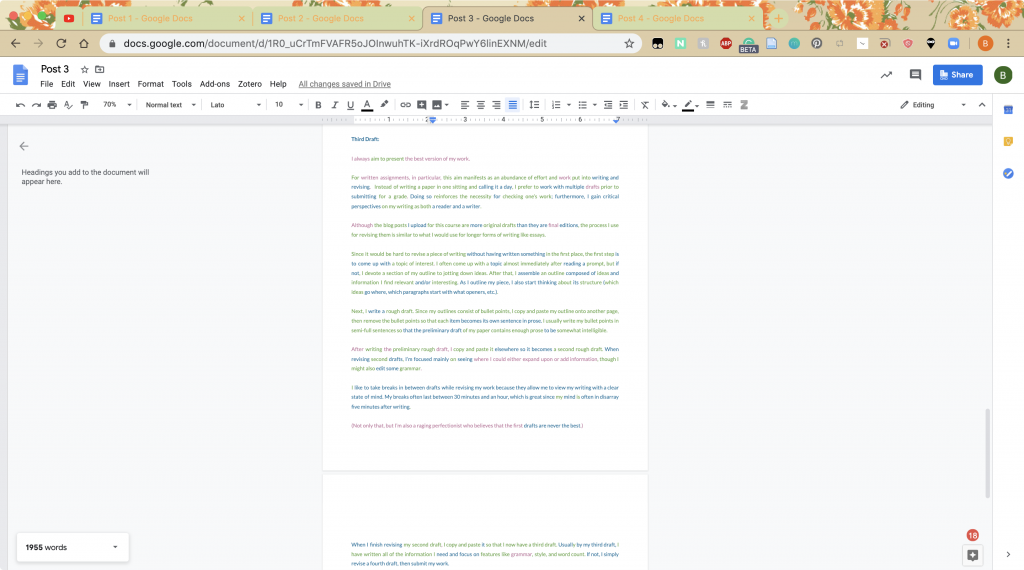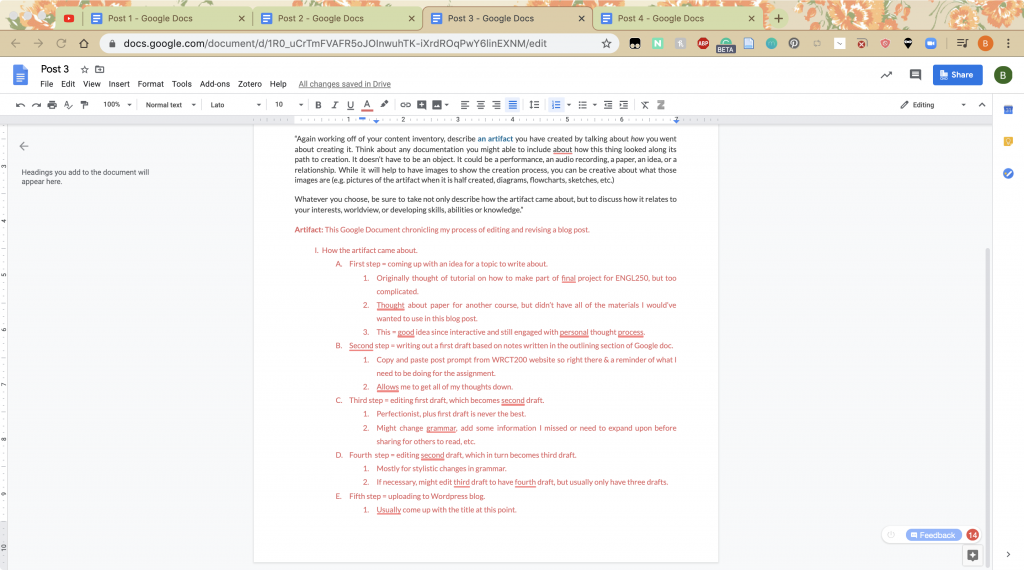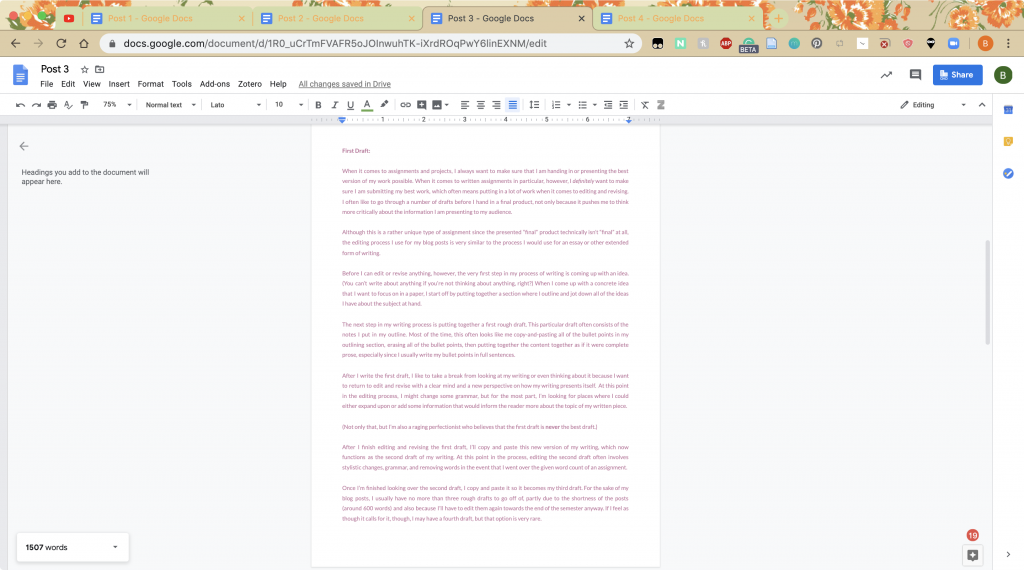Whenever I work on written assignments, I put an abundance of effort into editing and revising.
Instead of writing a paper in one sitting, I prefer to work on multiple drafts before I submit it. Doing so reinforces the necessity of checking my work in addition to helping me refine my skills as both a reader and a writer.
Although the posts I upload are much shorter than the average academic paper, I use the same process for revising either medium.
First, I come up with a topic. This usually happens when I’m reading a prompt, and I like to devote a section of my outline solely to jotting down ideas for a topic.
After I come up with a topic, I assemble an outline of relevant ideas and information.
While outlining, I like to consider my piece’s potential structure (which ideas go where, which paragraphs start with what, etc.). This way, I can anticipate what parts of my work seem easier to write versus what might take some mulling over.
Next, I write a rough draft. Since my outlines consist of bullet points, I just copy and paste my outline onto another page, then remove the bullet points so each item becomes its own sentence. For some, this would be a grammatical nightmare, but I usually write my bullet points in semi-full but intelligible sentences.
After writing a first rough draft, I copy and paste it elsewhere so it becomes a second rough draft. While revising second drafts, I focused on seeing where I could either expand on certain points or add information, though I may also edit some grammar here and there.
Whenever I’m editing a draft, I write out adjustments in a new color. If I like certain parts as they are, I leave them in their original color work around them accordingly.

I usually take breaks for 30 minutes to an hour in between draft revisions. My mind tends to be quite jumbled after a round of editing, so taking breaks ensures that I can view my writing more clearly each time.
(I’m also a raging perfectionist, but that’s a story for another day.)
After revising my second draft, I copy and paste it once more to make a third draft. By my third draft, I usually have relevant information already written down, so I focus on grammar, style, and word count. In some cases, I may also revise a fourth draft prior to submitting my work.

This has been my writing process. Thank you for coming to my TED Talk.
(featured image credit: @dsmacinnes via unsplash.)


